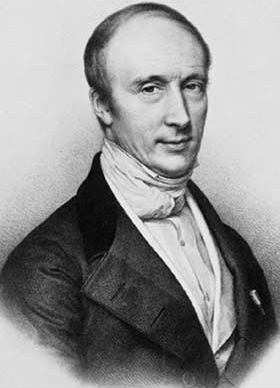
The real numbers and Cauchy sequences


Cauchy sequences
Not every sequence of rational numbers defines a real number, however. For example, the sequence $$1,2,3,4,5,6,...$$ moves off to infinity and doesn't specify any real number. This is why, in this new way of thinking about real numbers, we only consider those sequences whose terms get arbitrarily close together as you move further along the sequence. To be precise, giving any number $\epsilon>0$ as small as you like, you can be sure that if you move far enough along the sequence, all terms to follow are within $\epsilon$ of each other.
Cauchy sequences are named after the French mathematician Augustin Louis Cauchy, 1789-1857.
Why would we want to do this?
That's a valid question. One advantage is that Cauchy sequences only consist of nice and friendly things we understand, namely the rational numbers. It's perhaps easier to imagine a sequence of rational numbers bunching up closer and closer and defining a number such as $\pi$ in their limit then it is to swallow the infinite decimal expansion $3.141592...$ whole. Another advantage of thinking of real numbers in terms of Cauchy sequences becomes apparent when you add or multiply two real numbers. Imagine, for example, you want to add $\pi=3.141592...$ and $\sqrt{2} = 1.414213...$. You can't just assume that the $nth$ digit in the decimal expansion of $\pi + \sqrt{2}$ is the sum of the $nth$ digit in the decimal expansion of $\pi$ and the $nth$ digit in the decimal expansion of $\sqrt{2}.$ That's because of the pesky carry operation. For example, the fourth digit after the decimal point in the decimal expansion of $\pi + \sqrt{2}$ isn't $5+2=7$, but $8$ because a $1$ has been carried from the right. In general, a carry could even ripple through a huge string of digits from right to left. Cauchy sequences don't have this problem. If you add (or multiply) the $nth$ term in a Cauchy sequence for $\pi$ and the $nth$ term in a Cauchy sequence for $\sqrt{2}$ you get the $nth$ term in a Cauchy sequence of $\pi + \sqrt{2}$ (or $\sqrt{2}\pi $). No carry required whatsoever. This can make calculations and especially theoretical arguments easier.A hitch?
With all this Cauchy sequence propaganda one fact we have suppressed so far is that a single real number comes with many Cauchy sequences that converge to it. For example, the sequences $$1,1,1,1,1,1,...$$ and $$1/2, 2/3, 4/5, 5/6, 6/7, 7/8,...$$ both converge to $1$.This is annoying, but not impossible to deal with. Technically, mathematicians declare all Cauchy sequences that converge to the same limit as "the same" (this results in a so-called equivalence relation) and then define a real number as an equivalence class of Cauchy sequences. The approach can be bit unwieldy, but then, mathematicians deal with unwieldy things all the time.
Using Cauchy sequences it's possible to define the real numbers from scratch, without ever even referring to decimal expansions or any other prior understanding of what they are. You can find a nice explanation in this document by Todd Kemp. The real numbers then form a completion of the rational numbers. They are what you get when you add a new number for every Cauchy sequence of rational numbers that converges to a limit that isn't itself a rational number.
About this article
Marianne Freiberger is Editor of Plus.
This article is part of our Who's watching? The physics of observers project, run in collaboration with FQXi. Click here to see more articles about constructivism.
Comments
Lisa Fine
Thank you Marianne Freiberger! The truly brilliant can explain the most complex concepts to others so they'll understand them, without feeling the need to further confuse them with technical and convoluted answers which will (hopefully) impress them, but unfortunately will keep them in the dark.
Some of us actually *want* others to be able to understand things. It's a good thing. Thanks.
Mauricio O Calvao
Of course, it is intuitively clear that the real line somehow may be conceived as a sort of geometrical realization of the number line. I wonder, however, how this relates to the non-standard real numbers, à la Robinson: are they also usefully thought of as represented on the same geometrical line or is there some kind of obstacle or difficulty to such an interpretation?